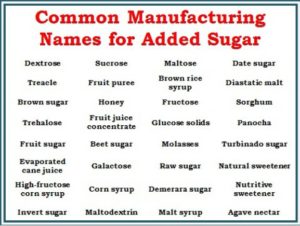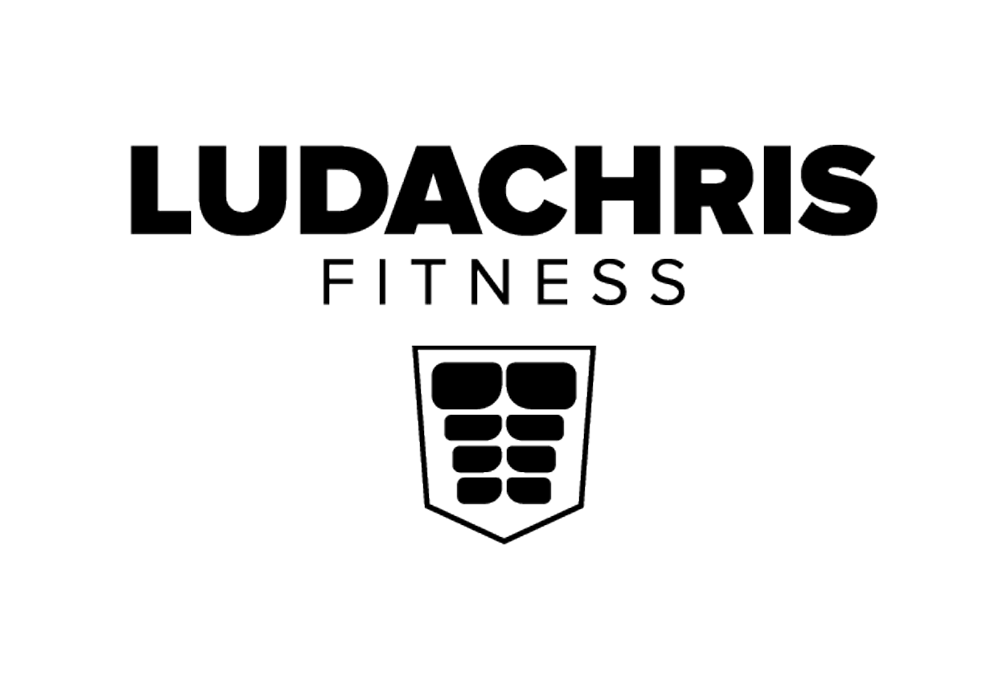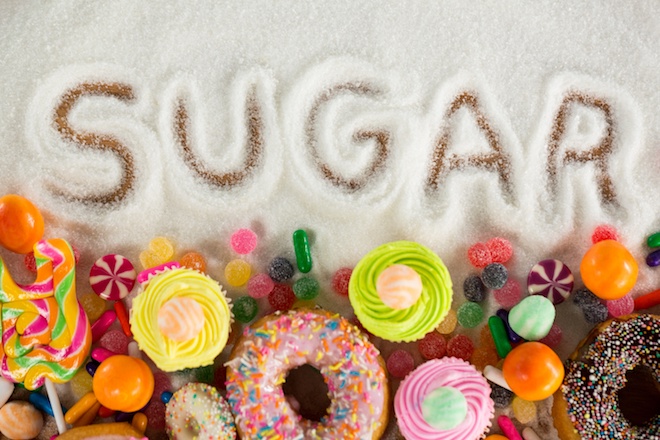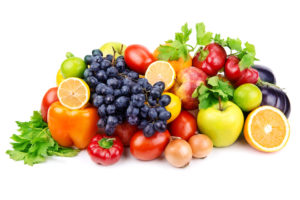We would all like to think that sugar is good for us. We all indulge in a treat after dinner, or snack during the day because of the “I deserve it” mentality. With the holidays fast approaching, we will all be going for seconds or even thirds of our mom’s apple pie.
I believe that sugar is, in fact, both naughty and nice. Do you find yourself craving cookies at 10 PM at night or right after lunch? There could be many reasons why this happening to you, especially if you have a sweet tooth like myself. Do you know the difference between the sugar in a Snickers bar vs. the sugar in bananas? From my own experience, sugar is one of the hardest cravings to beat. Not monitoring your sugar consumption can lead to potential diseases or health complications directly correlated with the overconsumption of sugar.
If you are trying to get real results in the gym or you’re trying to be proactive in maintaining your health, Its vital first and foremost to have a basic understanding as to how nutrition plays a huge part in our overall well being. When it comes to sugar, did you know there are really two different categories? The first being Natural sugar, the sugar that is good for us. And the second type consists of added sugars the ones not so great for us. Below is the breakdown of each.
Natural Sugar (The Good Sugars)
Natural sugars such as glucose and fructose, that occur in fruits, vegetables and dairy
are not the enemy because when we get these sugars from the source ie: a banana, they are not stripped of their nutrients. In a real piece of fruit there are also vitamins, minerals and fiber. These important nutrients help our bodies absorb the sugar correctly and not all at once leading to a sugar high and then a crash in energy. Natural Sugar is a much better alternative to kick those sugar cravings because you are at least getting some great nutrients opposed to say a chocolate bar.
Added Sugar (Free Sugar/Bad Sugar)
Added sugars or free sugars are sugars taken out of their natural source. Sucrose is an example of a sugar extracted from sugarcane plants. It is then refined into table sugar or added into foods as a sweetener or preservative. There are roughly 60 different types of sugars both natural and refined, which are then added to things such as soft drinks, juices, baked goods, and several foods and drinks available to us 24/7.

Free sugars are stripped of any nutritional value. So, when we consume lots of added sugars, theyare absorbed much quicker by our bodies. You may find that even a small looking snack may be filled with more sugar than our bodies can handle. Imagine going to the movies one night, after a long day, sedentary at the office. You order popcorn with butter, a shareable size bag of M&M’s and a large diet Coca-Cola. By the time the movie is over you’ll find yourself on a nice sugar high but immediately after rushing home to take a nap. After consuming all these added sugars, your body may be overwhelmed and since you’re just sitting being inactive, innocently enjoying the movie, your body is hard at work figuring out where to put all this sugar. If you are not being active your body is much more likely to store that sugar as fat.
The truth is that sugar is pretty much in everything. From fountain pops, bread, pasta sauces, to baked goods. Why? Because it is an inexpensive ingredient, addictive and food companies want your business. Over the last 20 years, the cost of healthy foods has doubled in price compared to processed foods which contain added sugars.

Always look at the Nutritional Value on the back of the packages. If you see multiple names like these. Try to stay clear.
Why Are We So Addicted to Sugar!
When we consume sugar, particularly processed items jam packed with added sugar, our brain reacts by releasing dopamine. Dopamine is also commonly known as the “feel good hormone”. Our brain associates sugar with a euphoric happy state.
So, when we are stressed or emotionally overwhelmed, it is entirely human to seek comfort, our happy place. In which case we may find ourselves reaching for a cookie, a candy bar or anything laced with that white sugary substance. As soon as we have a bite, it feels like sweet relief. Soon after that follows the guilt, because before we know it, all we have is an empty cookie jar and crumbs. This leaves us wanting more and more sugar to get the next satisfying hit of dopamine. Added sugars give our brains a bigger hit of dopamine than natural sugars do. Which is why you are more likely to go for the milk duds over the apple.
My Personal Experience
While I was training for a marathon i figured that I could eat all my favorite treats whenever I wanted because I would be surely burning everything off! I would add Nutella into my oatmeal in the morning with a banana pre-run. At first, I thought everything was going well! Until I found myself feeling rather heavy and bloated in my stomach. Half way through my runs the feeling of wanting to vomit would occur. My post run my meals included good foods like vegetables, rice and salmon but were usually accompanied by a sugary snack! A pack of cookies, 2 huge pieces of cake or one, even two chocolate bars. Even though I was burning many calories through my training, I noticed that my sleep was restless (too much sugar close to bedtime). I also felt myself having headaches until I got my next hit of sugar. And although I was losing some weight, I noticed that I still had pockets of cellulite on parts of my lower body. Most women tend to carry their fat cells on their lower body. legs, thighs and glutes. The sugar that I was eating came from packaged sources with preservatives. Overall I felt puffy in parts of my body, tired throughout the day and constantly craving sweets. Post marathon I decided to change things up, clearly something wasn’t working. I started to ask and learn more about nutrition and why I still had cellulite with all that running! I was only fooling myself. The signs were all there from how added sugar made me feel. I eliminated the added sugar once I realized how terrible it was and holding me back from my goals. I started weight training which added muscle and gave me more shape, increased my water intake and followed a meal plan free of added sugar 80-90% of the time. Occasional cheat snacks were allowed but all in moderation, that’s the key! Soon I noticed my sleep. mood and inflammation improving. The cellulite that was so stubborn finally went away. From my personal experience food really is just fuel and protection for our bodies. Needless to say, if you want to see some real results from all that hard work you’ve been putting in at the gym, you have to give your body the right foods.
What should i do?
By now you may be saying to yourself, I’m a total sugar addict. How much sugar should I be having in a day? Or maybe you’re asking, does it really matter how much sugar I’m having if I’m an active person? After all, I’ll burn it off, right? Wrong. I used to think this way and I had a diet based on 85% chocolate.
I’m not saying don’t you dare ever eat chocolate cake again! All I’m saying is be aware of what you put into your body and the impacts it can have on your health. Moderation is key.
It’s tough to tell everyone exactly how much sugar they should be having as everyone is different. The world health organization recommends no more than 6 teaspoons of added sugar. Here is my recommendation: Keep It Simple! If it’s real. Eat it. If it’s processed and packaged limit it! It is suggested to eat between 2-4 servings of fruit a day. Again, it varies for each person. By eating fruit as a source of sugar, you are less likely to become overweight and unhealthy. We all need to be proactive in reducing illnesses caused by too much sugar, like type 2 diabetes.
Choosing to eat an array of colourful fruits has much more benefits then processed garbage. These benefits include providing essential vitamins and minerals, dietary fiber and phytonutrients. In fact, certain fruits that have that beautiful orange color to them, like oranges and mangos, possess antioxidants like beta-carotene which are great for your eyes and glowing skin! Who doesn’t want glowing skin! It’s also been said that fruits may help to remove free radicals to help prevent diseases like cancers.
To all my fellow sweet tooth’s out there. You are not alone. I also fall victim to chocolate fountains and bonbons The more we start to understand what is good for us and what isn’t, the better choices we can make concerning our health. At the end of the day MODERATION IS KEY! I took the liberty of providing a link to direct you to an awesome page that offers great healthy alternatives for Satisfying your sweet tooth: www.dessertswithbenefits.com.




Thanks for this great read! I’m a total sugar addict… Currently trying to beat these nasty cravings.